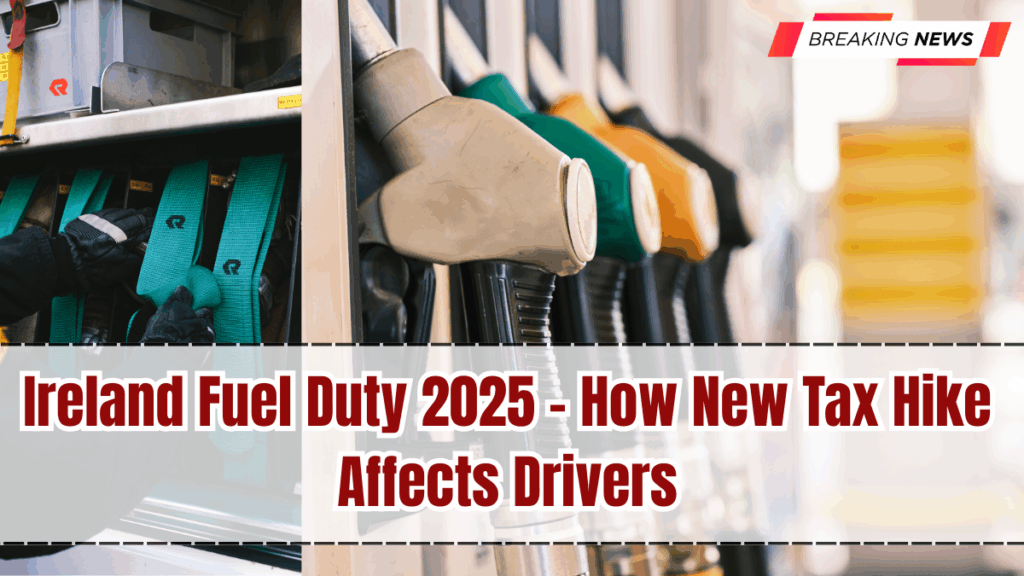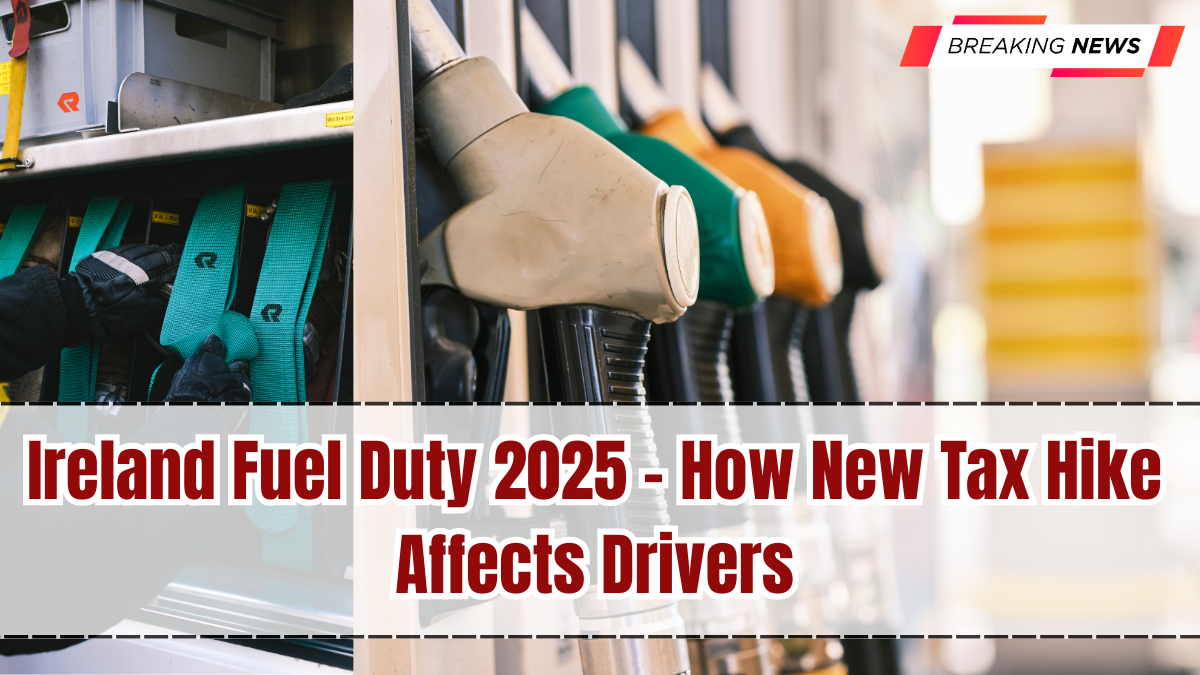The Ireland Fuel Duty 2025 hike is one of the most discussed policy changes this year, as drivers face higher petrol and diesel prices at the pump. The government has increased fuel duty as part of its climate action strategy, aiming to reduce emissions and encourage a transition toward hybrid and electric vehicles.
While the environmental goals are clear, the tax hike has sparked debate among motorists, especially those in rural areas who rely heavily on private cars. The cost burden is now pushing households to rethink budgets, driving habits, and even vehicle choices.
So, what exactly has changed in 2025, how much more will drivers pay, and what alternatives are being promoted?

Why Did Ireland Increase Fuel Duty in 2025?
The increase is tied to Ireland’s commitment to cutting carbon emissions in line with EU climate goals. Transport is one of the largest contributors to emissions, and fuel duty is seen as a direct way to discourage excessive use of petrol and diesel.
By making fossil fuels more expensive, the government hopes to push drivers toward fuel-efficient cars, hybrids, and EVs. The policy also helps generate additional tax revenue to fund green infrastructure, such as EV charging stations and renewable energy projects.
How Much Has Fuel Duty Increased?
In 2025, fuel duty increased by an average of 5 to 7 cents per litre on both petrol and diesel.
For the average Irish driver filling a 50-litre tank, this means paying €2.50–€3.50 more per refill compared to last year. Over the course of a year, frequent commuters could spend several hundred euros extra just on fuel.
Diesel users, who often drive longer distances, are particularly impacted by the hike, making transport and logistics businesses more vocal in their criticism.
How Are Drivers Responding to the Tax Hike?
Responses vary depending on location and lifestyle.
-
Urban drivers have more alternatives, such as public transport or car-sharing, making the shift less painful.
-
Rural drivers face bigger challenges since limited bus and rail services mean private cars are essential.
-
Fleet operators and logistics firms warn of rising delivery costs, which may trickle down into higher consumer prices.
Some drivers are choosing hybrids or EVs earlier than planned, while others are cutting non-essential trips to manage costs.
What Impact Does the Hike Have on Household Budgets?
For many households, fuel duty is now a serious financial consideration.
Families with long daily commutes are spending €40–€60 more per month, adding strain to budgets already affected by higher living costs. Businesses reliant on delivery vans are passing costs on to consumers, making goods more expensive.
This highlights the double impact—direct costs for drivers and indirect costs through rising prices of everyday products.
Are EVs Becoming a More Attractive Option?
Yes, the fuel duty hike is indirectly boosting EV demand.
Government incentives, lower running costs, and expanded charging infrastructure are making EVs more appealing. When compared to rising petrol and diesel prices, EVs now look like a smarter long-term investment, despite higher upfront costs.
Hybrids are also becoming popular transition options, offering both fuel savings and lower road taxes compared to traditional cars.
What Alternatives Are Available for Drivers?
The government is encouraging drivers to explore multiple alternatives:
-
Carpooling and ridesharing programs are expanding, especially in urban areas.
-
Public transport upgrades in Dublin, Cork, and Galway provide more reliable commuting options.
-
Green finance loans for EVs and hybrids make switching more affordable.
-
Fuel efficiency campaigns teach drivers habits like smoother driving and regular maintenance to save fuel.
These measures aim to soften the blow of higher fuel costs while accelerating Ireland’s green transition.
What Challenges Does the Fuel Duty Hike Create?
Despite its environmental benefits, challenges remain.
Rural drivers argue that they are unfairly burdened, as they lack realistic alternatives to car use. Businesses warn of inflationary pressure as higher transport costs raise the price of goods and services.
Public resistance may also grow if the government fails to balance environmental policies with affordability. The long-term success of the duty increase will depend on whether sustainable alternatives truly become accessible to all drivers.
What Is the Future of Fuel Duty in Ireland?
Analysts predict further gradual increases in fuel duty through the decade. By 2030, petrol and diesel could face additional hikes as part of Ireland’s zero-emission goals.
However, the government is expected to pair these hikes with stronger EV incentives, improved charging infrastructure, and expanded public transport networks. The transition will likely be smoother for urban areas than rural communities, but the overall trend is clear: petrol and diesel dependency is being phased out.
Conclusion
The Ireland Fuel Duty 2025 hike is reshaping how Irish drivers think about fuel, costs, and sustainability. While the increases hurt household budgets, they are part of a broader strategy to reduce emissions and support greener alternatives.
For drivers, the decision is now whether to absorb the higher costs, adopt fuel-saving habits, or make the switch to hybrid and electric vehicles. What’s clear is that Ireland’s roads in 2025 mark a turning point toward cleaner and more efficient transport.
FAQs
How much did fuel duty increase in 2025?
By 5–7 cents per litre, adding €2.50–€3.50 per tank.
Why did the government raise fuel duty?
To cut emissions, fund green infrastructure, and encourage EV adoption.
Who is most affected by the hike?
Rural drivers and logistics companies, due to heavy reliance on diesel.
Are EVs more affordable now?
Yes, thanks to government grants, lower running costs, and charging expansion.
Will fuel duty increase again in the future?
Yes, more hikes are expected gradually until 2030, paired with EV incentives.
Click here to know more.
